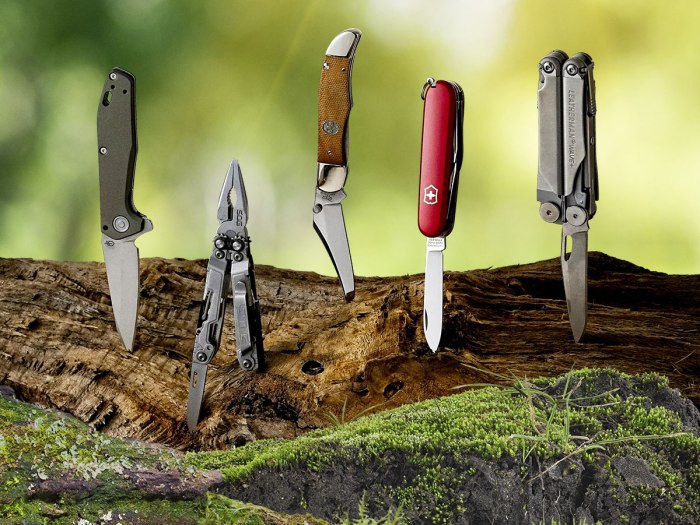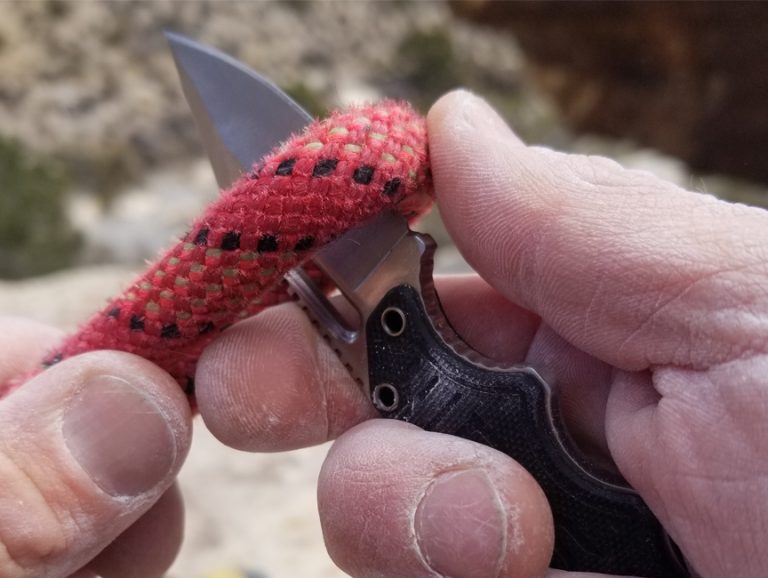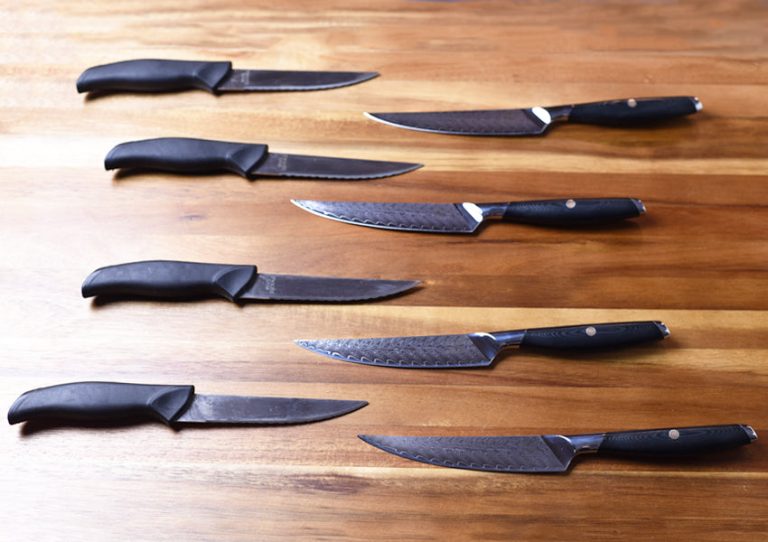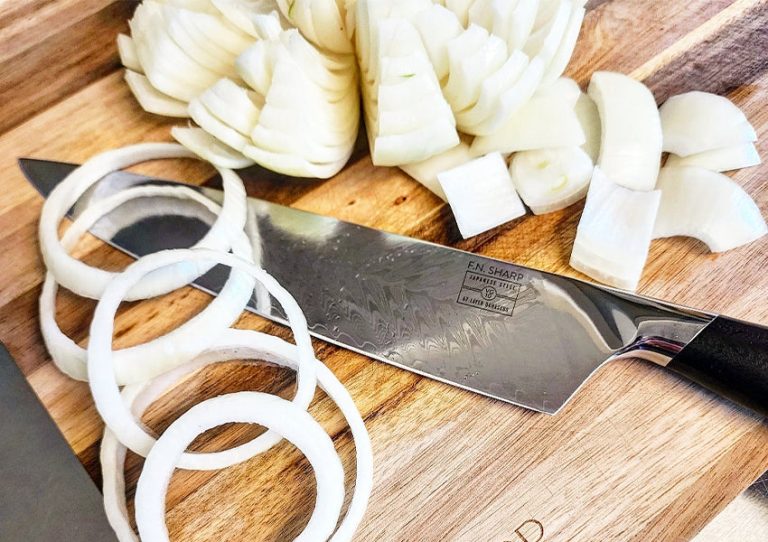The Charm of Hand-Forged Kitchen Knives
Hand-forged kitchen knives hold an irresistible charm with their unique craftsmanship and superior performance. In the world of kitchen cutlery, hand-forged knives are revered for their exceptional quality, durability, and aesthetic appeal.
Crafted by skilled artisans using traditional techniques, these knives are meticulously shaped and honed with precision, resulting in a blade that is not only sharp but also retains its edge for a longer time. The forging process involves heating and hammering the steel, which enhances its strength and hardness, creating a knife that can withstand the rigors of daily use.
Additionally, hand-forged knives often feature beautifully patterned blades and handcrafted handles, making them a stunning addition to any kitchen. With their exquisite craftsmanship and exceptional performance, hand-forged kitchen knives are a testament to the artistry and timeless appeal of handmade tools.
The Rustic Beauty Of Hand-Forged Kitchen Knives
The charm of hand-forged kitchen knives lies in their rustic beauty. These knives embody a rich history that dates back centuries. Crafted with meticulous craftsmanship and artistry, hand-forged knives are not just tools but works of art. Each knife is carefully shaped, hammered, and heat-treated by skilled artisans. The result is a blade that is not only sharp and durable but also carries a unique aesthetic appeal.
| History of hand-forged knives: | Hand-forged knives have been around for centuries, with their origins traced back to ancient civilizations. They were initially created out of necessity for hunting and self-defense. Over time, the craftsmanship involved in making these knives evolved, incorporating various techniques and styles from different regions. |
| Craftsmanship and artistry in hand-forged knives: | The process of forging a hand-forged knife requires exceptional skill and attention to detail. Each knife is forged by hand, using a combination of heating, shaping, and hammering techniques. This craftsmanship ensures that each blade is unique and of the highest quality. The artisans who create these knives take pride in their work, resulting in knives that are not only functional but also beautiful. |
| Unique aesthetic appeal: | The beauty of hand-forged kitchen knives lies in their raw and organic appearance. Unlike mass-produced knives, hand-forged knives often exhibit imperfections, such as slight variations in shape and texture. These imperfections add character to the knife and serve as a testament to the handcrafted nature of the product. The unique patterns on the blade, created by the folding and hammering process, further enhance its visual appeal. |
Superior Performance Of Hand-Forged Kitchen Knives
Hand-forged kitchen knives possess an undeniable charm that sets them apart from mass-produced alternatives. Their superior performance can be attributed to the art of heat treatment and forging techniques employed during their creation. |
One significant advantage of these knives is their enhanced sharpness and durability. Each blade is meticulously crafted by skilled artisans, allowing for a finer edge that maintains its sharpness for longer periods. This results in effortless slicing and precise cutting. Another key attribute of hand-forged kitchen knives is their exceptional balance and control. The careful refinement of weight distribution ensures that these knives feel comfortable and well-balanced in the hand. This enables chefs to maneuver with ease, achieving more precise and accurate cuts. |
The Artisanal Experience Of Owning Hand-Forged Kitchen Knives
The charm of hand-forged kitchen knives lies in the artisanal experience they offer. These knives are more than just tools; they are works of art. With personalized customization options, you can truly make a hand-forged knife your own. By connecting with the maker and learning their story, you develop a deeper appreciation for the craftsmanship behind each knife.
The journey of a hand-forged knife is remarkable. From the meticulous selection of high-quality materials to the skillful forging process, every step is guided by the maker’s expertise. Each knife becomes a testament to their dedication and passion. Owning a hand-forged knife is not just about having a superior cutting tool; it’s about embracing the artistry and tradition behind it.
The Time-Honored Tradition Of Forging Hand-Forged Kitchen Knives
Master blacksmiths have been honing their craft for centuries, using age-old techniques to create exquisite hand-forged kitchen knives. Each knife is meticulously crafted from start to finish, resulting in a piece that is not only functional but also a work of art. These skilled artisans begin the process by carefully selecting the materials, often using high-carbon steel for its durability and sharpness. They then heat the metal to a precise temperature and skillfully shape it using traditional tools like hammers and anvils.
The hand-forging process requires great precision and finesse. As the blacksmiths meticulously shape the blade, they incorporate their own unique designs and patterns, making each knife truly one-of-a-kind. This attention to detail is what sets hand-forged kitchen knives apart from their mass-produced counterparts.
Furthermore, the use of traditional tools and materials is crucial in preserving the authenticity and quality of these knives. The blacksmiths’ dedication to their craft is evident in every step of the process, ensuring that each knife is of the highest caliber.
Hand-forged kitchen knives are not just utensils, but cherished heirlooms that can be passed down through generations. The charm of these masterfully crafted knives lies in their timeless beauty and exceptional performance, making them a must-have for any culinary enthusiast.
The Role Of Heat Treatment In Crafting Hand-Forged Kitchen Knives
The heat treatment process is a crucial step in creating hand-forged kitchen knives that embody both hardness and flexibility. Achieving the optimal hardness ensures that the blade retains its sharpness for a longer time, while flexibility ensures it won’t break or chip easily.
To achieve this, various methods and tools are employed during the heat treatment process. This includes heating the blade to specific temperatures, followed by rapid quenching to enhance its hardness. Then, a tempering process is carried out to balance the hardness with toughness, resulting in a knife that can withstand daily kitchen tasks.
The skill of the bladesmith plays a vital role in this process, as they must closely monitor and control the temperatures throughout. This ensures the blade attains the desired hardness and flexibility, resulting in a kitchen knife that offers exceptional performance and durability.
The Artistry Of Designing Hand-Forged Kitchen Knives
The artistry of designing hand-forged kitchen knives lies in their unique blade shapes, handle materials, ergonomics, and customization options. Each blade shape serves a specific purpose, enhancing the functionality of the knife. From the versatile chef’s knife to the nimble pairing knife, **blade shapes** are carefully crafted to excel in various culinary tasks.
The handle materials used in hand-forged kitchen knives not only enhance their visual appeal but also provide **ergonomics** for comfortable and secure grip. Whether crafted from durable wood, grippy micarta, or luxurious bone, the handle material is chosen to suit individual preferences and cooking techniques.
One of the remarkable aspects of hand-forged kitchen knives is the **customization** options they offer. From intricate engravings to personalized handles, these knives can be tailored to reflect the user’s style and personality. Customization also extends to the choice of materials, finishes, and blade patterns, making each knife a truly one-of-a-kind masterpiece.
Proper Storage And Cleaning Techniques For Hand-Forged Kitchen Knives
table { border-collapse: collapse; }table, th, td { border: 1px solid black; padding: 8px; }The Charm of Hand-Forged Kitchen Knives
Proper storage and cleaning techniques are crucial in maintaining the quality of hand-forged kitchen knives. Choosing the right storage methods is essential to prevent damage. It is recommended to use a knife block, magnetic holder, or a knife roll to keep the knives safe and secure. Avoid storing them loosely in a drawer as this can lead to scratches and potential injuries. Cleaning the knives properly after each use is equally important. Use a mild dish soap and warm water to wash the knife, **taking care not to submerge the handle**. **After cleaning, ensure thorough drying** to prevent rust formation. Avoid using harsh cleaning agents or abrasive sponges as they can damage the knife’s blade. Lastly, it’s crucial to avoid common mistakes such as **putting the knife in a dishwasher**, leaving it wet for too long, or **using it on inappropriate surfaces**. By following these storage and cleaning guidelines, you can maintain the beauty and functionality of your hand-forged kitchen knives.
Choosing the right storage methods to prevent damage:
| Storage Method | Advantages | Disadvantages |
|---|---|---|
| Knife block | – Keeps knives organized – Protects blade from damage – Easy access to knives | – Takes up counter space – Blades may touch, causing scratches or dulling |
| Magnetic holder | – Space-saving option – Displays knives beautifully – No risk of dulling blades | – Knives are exposed to dust and debris – Careful handling needed to prevent accidents |
| Knife roll | – Portable and convenient – Protects knives during travel – Offers individual compartments | – Requires extra storage space – Frequent rolling and unrolling may cause wear |
Cleaning and drying to maintain the knife’s quality:
To keep your hand-forged kitchen knives in optimal condition, it’s essential to clean them properly after each use. Gently wash the knife with **mild dish soap** and **warm water**, **avoiding submerging the handle**. Rinse thoroughly and **ensure thorough drying** to prevent rust formation. Wipe the knife with a soft cloth or towel, paying extra attention to the blade and handle. Avoid using **harsh cleaning agents** or **abrasive sponges**, as they can damage the knife’s blade. Additionally, it’s important to avoid **putting the knife in a dishwasher**, as the high heat and harsh detergents can cause corrosion. By implementing these cleaning and drying techniques, you will prolong the lifespan of your hand-forged kitchen knives and maintain their exceptional quality.
Avoiding common mistakes that can harm the knife:
- Do not leave the knife wet for too long, as it can lead to rust formation.
- Avoid using the knife on inappropriate surfaces, such as glass or stone countertops, as this can damage the blade.
- Never put the knife in a dishwasher, as the high heat and harsh detergents can cause corrosion.
- Avoid leaving the knife loose in a drawer, as it can result in scratches and potential injuries.
Honing And Sharpening Hand-Forged Kitchen Knives
The Charm of Hand-Forged Kitchen KnivesThe artistry and craftsmanship behind hand-forged kitchen knives is truly enchanting. One important aspect of maintaining these exceptional tools is honing and sharpening. Understanding the difference between honing and sharpening is key.
Honing is the process of realigning the blade’s edge, ensuring optimal cutting performance. It does not actually remove metal. Regular honing after each use is recommended to maintain the knife’s sharpness.
Sharpening, on the other hand, involves actually removing metal to create a new edge. This process is typically performed less frequently, depending on usage and signs of dullness. Investing in quality sharpening tools and techniques is crucial for achieving consistently sharp blades.
Frequent honing helps prolong the time between sharpening sessions. Signs that indicate when it’s time to hone or sharpen include decreased cutting efficiency, noticeable dullness, or difficulty in slicing through ingredients.
| Tools and Techniques for Honing and Sharpening |
|---|
| 1. Honing Rod/Steel |
| 2. Whetstone |
| 3. Electric Knife Sharpener |
| 4. Professional Knife Sharpening Service |
Remember, proper honing and sharpening practices will keep your hand-forged kitchen knives in prime condition, allowing you to enjoy their charm and efficiency for years to come.
Longevity And Preservation Of Hand-Forged Kitchen Knives
Hand-forged kitchen knives possess a unique charm that sets them apart. To ensure their beauty and performance endure for years to come, regular maintenance and care routines are essential. These knives require extra attention to preserve their distinct qualities.
**Regular maintenance**: Properly cleaning and drying the knife after each use is crucial. This prevents rust and corrosion, preserving its longevity. Storing the knife in a protective sheath or a knife block also safeguards against accidental damages.
**Professional sharpening and restoration**: Despite taking care, knives may lose their sharpness over time. In such cases, professional sharpening services can restore their cutting edge. These experts can also address any other issues like handle repair or blade refinishing, ensuring the knife remains in excellent condition.
By following these maintenance practices and utilizing professional services, hand-forged kitchen knives can remain beautiful and perform optimally throughout their lifespan, making them a prized possession for any culinary enthusiast.
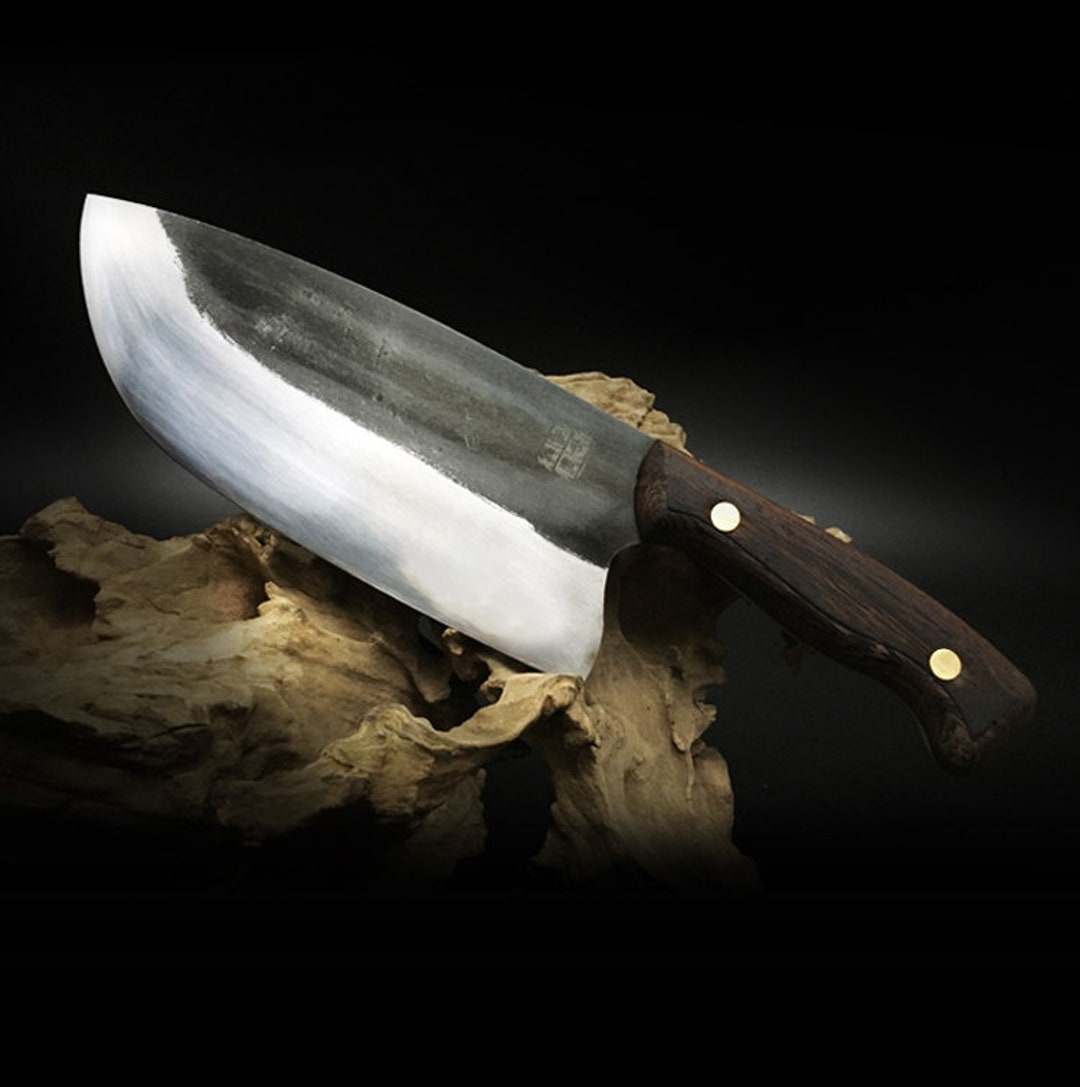
Credit: www.etsy.com
Conclusion
To conclude, the allure of hand-forged kitchen knives lies in their craftsmanship and superior quality. These knives are a testament to the artistry and skill of the artisans who create them, ensuring that each blade carries its own unique character.
From the careful selection of materials to the painstaking process of forging and shaping the blade, every step is performed with precision and dedication. The result is a knife that is not only visually stunning but also offers exceptional performance in the kitchen.
The hand-forged process creates a stronger, more durable blade that holds its edge for longer, providing a cutting experience like no other. Whether you are a professional chef or a home cook, investing in a hand-forged kitchen knife allows you to elevate your culinary skills and experience the true joy of preparing meals.
Discover the charm of these artisanal knives and transform your cooking experience today.

